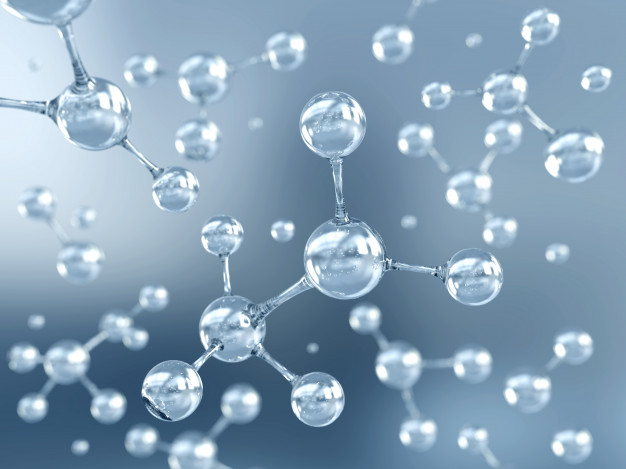
27 Ene The Most Common Techniques Used to Study Nanoparticles
ZetaView® BASIC, ZetaView® TWIN and ZetaView® QUATT can all be used to determine the size, concentration, zeta potential and fluorescence of nanoparticles. This is done by a process known as Nanoparticle Tracking Analysis (NTA). There are several techniques commonly used to study nanoparticles. Besides NTA, these include:
Dynamic Light Scattering
A 2008 paper defines DLS as a technique that uses time variation of scattered light from suspended particles under Brownian motion to obtain hydrodynamic size distribution. It is simple and quick, but relatively poor at analysing multimodal particle size distribution. According to Cho and colleagues, this means the scattering intensity of large particles masks that of small particles when analysing mixtures of different sized particles.
PROS: simple and quick
CONS: poor at analysing multimodal particle size distribution
Electron Microscopy
Microscopy can be used to assess nanoparticle size and shape. It does this by using a beam of electrons to create an image of the studied sample. Cryo-electron microscopy (Cryo-EM) and transmission electron microscopy (TEM) are the microscopy methods most used to study biological samples, according to an IJMS paper.
TEM has dehydrating preparations that cause shrinkage and an artificial cup-shaped morphology of extracellular vesicles (EVs). EVs are nanoparticles frequently studied because of their roles in a wide variety of physiological and pathological processes.
Cryo-EM is considered a better EM option for visualising nanoparticles and proteins because it is free of dehydration artefacts. With Cryo-EM samples are under liquid nitrogen so cells remain intact with no ultrastructural changes or redistribution of elements according to this 2019 review.
A paper from Toxicological Sciences states that electron microscopy is advantageous in that it offers good resolution and imaging. However, a 2019 comparison of techniques reveals that EM is time-consuming and technically challenging. Anderson and colleagues state that it additionally offers very low sample throughput.
PROS: good resolution and imaging
CONS: time-consuming, technically challenging, low sample throughput
Flow Cytometry
Flow cytometry is used to measure size and structure. A laser with a specific wavelength is directed through a stream of fluid with suspended particles in it. According to an article in the journal Cells, the presence of particles in the sample determines the degree of light scattering. In the textbook Characterization of Nanoparticles, Hole states that flow cytometry can distinguish different EV phenotypes by detecting fluorescently labelled antibodies bound to biochemical markers.
Flow cytometry is widely used because of its high throughput capabilities. According to an article on JoVE, the small size of EVs and lack of discrete populations positive for markers of interest makes analysis of EVs with flow cytometry difficult.
PROS: high throughput
CONS: hard to detect smaller nanoparticles, hard to distinguish between populations
How Does Nanoparticle Tracking Analysis Fare?
There are a lot of tools for the analysis of nanoparticles in existence. Deciding on which one to use necessitates consideration of the purpose of your research and the results you require. Here are a few things to think about when considering NTA:
Since the commercialisation of NTA technology around 20 years ago, the technique has become increasingly popular. Today, NTA is a mainstream technique and there are thousands of systems for it installed worldwide as stated by Hole in a 2020 textbook.
Advantages of NTA
Considered alongside other common techniques, NTA has clear advantages.
- Intermediate capital costs
- Low running costs
- Minimal sample preparation
- User interpretable dataset
- Easy to learn
- Quick to run
Still according to Hole, it additionally measures the same size property as DLS, but at a significantly higher resolution. With NTA, researchers can phenotype EVs below the size range of most flow cytometers. What’s more, NTA by ZetaView® allows for high sample throughput.
For more information about benefits, read about ZetaView® on our nanotechnology products page!
References
Xu, R. (2008). Progress in nanoparticles characterization: Sizing and zeta potential measurement. Particuology, [online] 6(2), pp.112-115. Available at: https://www.sciencedirect.com/science/article/pii/S1674200108000357 [Accessed 23 Jan. 2020].
Cho, E., Holback, H., Liu, K., Abouelmagd, S., Park, J. and Yeo, Y. (2013). Nanoparticle Characterization: State of the Art, Challenges, and Emerging Technologies. Molecular Pharmaceutics, [online] 10(6), pp.2093-2110. Available at: https://www.ncbi.nlm.nih.gov/pmc/articles/PMC3672343/ [Accessed 23 Jan. 2020].
Szatanek, R., Baj-Krzyworzeka, M., Zimoch, J., Lekka, M., Siedlar, M. and Baran, J. (2017). The Methods of Choice for Extracellular Vesicles (EVs) Characterization. International Journal of Molecular Sciences, [online] 18(6), p.1153. Available at: https://www.ncbi.nlm.nih.gov/pmc/articles/PMC5485977/ [Accessed 23 Jan. 2020].
Gurunathan, S., Kang, M., Jeyaraj, M., Qasim, M. and Kim, J. (2019). Review of the Isolation, Characterization, Biological Function, and Multifarious Therapeutic Approaches of Exosomes. Cells, [online] 8(4), p.307. Available at: https://www.ncbi.nlm.nih.gov/pmc/articles/PMC6523673/ [Accessed 23 Jan. 2020].
Powers, K., Brown, S., Krishna, V., Wasdo, S., Moudgil, B. and Roberts, S. (2006). Research Strategies for Safety Evaluation of Nanomaterials. Part VI. Characterization of Nanoscale Particles for Toxicological Evaluation. Toxicological Sciences, [online] 90(2), pp.296-303. Available at: https://academic.oup.com/toxsci/article/90/2/296/1658528#63452862 [Accessed 23 Jan. 2020].
Bachurski, D., Schuldner, M., Nguyen, P., Malz, A., Reiners, K., Grenzi, P., Babatz, F., Schauss, A., Hansen, H., Hallek, M. and Pogge von Strandmann, E. (2019). Extracellular vesicle measurements with nanoparticle tracking analysis – An accuracy and repeatability comparison between NanoSight NS300 and ZetaView. Journal of Extracellular Vesicles, [online] 8(1), p.1596016. Available at: https://www.ncbi.nlm.nih.gov/pmc/articles/PMC6450530/ [Accessed 23 Jan. 2020].
Anderson, W., Lane, R., Korbie, D. and Trau, M. (2015). Observations of Tunable Resistive Pulse Sensing for Exosome Analysis: Improving System Sensitivity and Stability. Langmuir, [online] 31(23), pp.6577-6587. Available at: https://pubs.acs.org/doi/full/10.1021/acs.langmuir.5b01402 [Accessed 23 Jan. 2020].
Hole, P. (2020). Particle Tracking Analysis (PTA). Characterization of Nanoparticles, [online] pp.79-96. Available at: https://www.sciencedirect.com/science/article/pii/B9780128141823000079#bb0075 [Accessed 23 Jan. 2020].
Inglis, H., Norris, P. and Danesh, A. (2015). Techniques for the Analysis of Extracellular Vesicles Using Flow Cytometry. Journal of Visualized Experiments, [online] (97). Available at: https://www.ncbi.nlm.nih.gov/pmc/articles/PMC4401354/ [Accessed 23 Jan. 2020].


Sorry, the comment form is closed at this time.